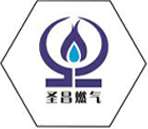
Dec . 05, 2024 10:45
Back to list
Gas Pressure Regulation and Control Systems for Safe Distribution
Gas Pressure Reducing Stations Ensuring Safety and Efficiency in Gas Distribution
Gas pressure reducing stations (PRDs) play a vital role in the distribution of natural gas, ensuring that it is delivered safely and efficiently to residential, commercial, and industrial consumers. These stations are critical components of gas pipeline systems, designed to control and reduce the high pressure of natural gas from transmission pipelines to a lower, manageable pressure suitable for consumption. Understanding the function, components, and importance of gas pressure reducing stations is essential for anyone involved in the energy sector or interested in natural gas distribution.
The Importance of Gas Pressure Reducing Stations
Natural gas is transported through pipelines at high pressures, which can often exceed 1,000 psi, depending on the distance and elevation of the pipeline network. However, such high pressures are unsuitable for residential and commercial use, where typical consumption pressures range from 0.25 psi to 60 psi. Gas pressure reducing stations are strategically located within the gas distribution network to manage this transition. Without these stations, the risk of damage to infrastructure and appliances would significantly increase, posing safety hazards to consumers.
Components of a Gas Pressure Reducing Station
A typical gas pressure reducing station comprises several key components
1. Pressure Regulators These are the primary devices within the station that reduce the incoming high pressure to a predetermined lower pressure. They automatically adjust to fluctuations in gas flow and demand, ensuring a consistent output pressure.
2. Filter Systems To prevent contaminants from entering the distribution network, filter systems are installed to remove particulates and debris from the gas. This is crucial for maintaining the integrity of downstream equipment and appliances.
3. Flow Meters Flow measurement devices are included to monitor the volume of gas passing through the station. This data is essential for billing purposes and for maintaining operational efficiency.
gas pressure reducing station

4. Safety Valves Safety valves act as critical safeguards against overpressure situations. If the pressure exceeds safe limits, these valves automatically vent excess gas, preventing potential explosions or equipment damage.
5. Control Systems Advanced electronic control systems are implemented to manage the operation of the station. These systems can remotely monitor pressures, flow rates, and the overall status of the station, allowing for prompt responses to anomalies.
Safety Considerations
Safety is paramount in the operation of gas pressure reducing stations. Regular maintenance and inspection of equipment are essential to prevent failures that could lead to hazardous situations. Additionally, operators must be trained to recognize signs of malfunction and to respond appropriately to emergencies.
To enhance safety practices, many gas utilities have adopted standardized protocols and best practices, including the installation of emergency shut-off valves and the implementation of robust monitoring systems. Moreover, regular drills and training sessions ensure that personnel are prepared for any potential incidents.
The Role in Energy Transition
As the world moves towards cleaner energy sources, gas pressure reducing stations also play a vital role in integrating renewable energy into the gas distribution network. With the increasing use of biogas and hydrogen, modifications to existing pressure reducing stations might be necessary to accommodate these gases, which can have different properties compared to conventional natural gas. This adaptability will be crucial in supporting the shift towards a more sustainable energy future.
Conclusion
In conclusion, gas pressure reducing stations are essential for the safe and efficient distribution of natural gas. Their role in lowering high transmission pressures to safe levels for consumption cannot be overstated. As the demand for energy continues to rise and as the energy landscape evolves, the importance of maintaining and upgrading these facilities will only grow. Investing in advanced technology and safety protocols will ensure that gas distribution remains reliable, efficient, and safe for all consumers. Understanding the intricacies of gas pressure reducing stations highlights the broader significance of infrastructure in the energy sector, emphasizing the need for ongoing commitment to operational excellence and safety.
Latest news
-
Safety Valve Spring-Loaded Design Overpressure ProtectionNewsJul.25,2025
-
Precision Voltage Regulator AC5 Accuracy Grade PerformanceNewsJul.25,2025
-
Natural Gas Pressure Regulating Skid Industrial Pipeline ApplicationsNewsJul.25,2025
-
Natural Gas Filter Stainless Steel Mesh Element DesignNewsJul.25,2025
-
Gas Pressure Regulator Valve Direct-Acting Spring-Loaded DesignNewsJul.25,2025
-
Decompression Equipment Multi-Stage Heat Exchange System DesignNewsJul.25,2025

